Results 1 to 10 of 32
Hybrid View
-
05-15-2016, 04:57 PM #1Junior Member

- Join Date
- May 2016
- Location
- NC
- Posts
- 14
Thanked: 0
Utopian,
Yes the slurry is purple. I'll look into it some more.
Thanks
-
05-15-2016, 05:51 PM #2

Hello Cara,welcome to the SRP forum ! I would think your surgical black ark if properly lapped and burnished to be a finer finisher than the bbw. Here is a link to a thread discussion concerning arks. http://straightrazorpalace.com/hones...-arkansas.html and the bbw http://www.coticule.be/the-cafeteria/message/20309.html
-
The Following User Says Thank You to Wirm For This Useful Post:
Carabnr (05-16-2016)
-
05-15-2016, 06:18 PM #3Senior Member



- Join Date
- Apr 2012
- Location
- Diamond Bar, CA
- Posts
- 6,553
Thanked: 3215
Welcome to the forum. The French stones are an interesting topic and the Blue or Purple stones in particular are still a bit of a mystery, as they were used as a backing stone for the yellow coticule and known ubiquitously as BBW Belgian Blue Waterstones.
It is the Coticules that garnered all the attention and the BBW was thought of as just a backing stone, glued to a coticule, though many old ones are naturally bonded. Much of the pre-war production of the “blue/French” never re-started for a variety of reasons and much of the hands on knowledge lost.
Today a blue slate stone is use as a backer that has no real honing properties. But some now believe, those old combo stones, especially the natural combination stone, were in fact a dual grit stones, both of which may have been high quality, the blue stone overlooked and a variety of the “French” stones.
So, many stones, that have been poo pooed as just BBWs may be some of the high grit French stones.
Your stone is of the size that were cut and commonly sold for razor use, under a variety of brands, though they may have been mined by just a few mines.
I have a couple of that size that produce a fine shaving edge and several others in varying dimensions that produce a range of edges. Like all natural stones the grit composition is totally random and can change wildly from one side to the other.
For more information you might want to look at the Razor & Stone site, many of us are also members there, the site is dedicated more towards stones for razor use, and has an excellent library of natural stone photos and much on the Blue, French stones.
Also the work of Henk & Janneke Bos, here is their website and their work “Grinding and Honing Information for Ship and Tool Lovers. Part 4 pages 47-49 cover the Blue and French stones.
If your stone will produce a cutting edge better than a hard black ark is debatable and only testing will tell. With these stones, the use of slurry can dictate results, so experimenting with thinning slurry may improve performance.
Hard ark stone performance can be improved by lapping, with loose silicone oxide, finished on high grit wet and dry and burnished with flat carbon steel tools or knives. If your stone is flat and smooth, burnishing can improve edge performance production of the Arks.
-
The Following User Says Thank You to Euclid440 For This Useful Post:
Carabnr (05-16-2016)
-
05-15-2016, 06:31 PM #4Junior Member

- Join Date
- May 2016
- Location
- NC
- Posts
- 14
Thanked: 0
Thanks for the nice welcome and thoughtful answers.
I feel like I've jumped into a rabbit hole, just went and bought several more stones. I guess I have the bug now.
I'll keep searching. Do you think it could be a Lorraine?
-
05-15-2016, 06:42 PM #5Senior Member


- Join Date
- Apr 2008
- Location
- Saint Paul, Minnesota, United States
- Posts
- 2,943
Thanked: 433
Many of us are hone addicts on here...lol!!
It looks to be a nice Belgian hone with can be used as a pre-finisher and some have used as a finisher (depending on the stone). If you are looking to sharpen tools mostly, research vintage Norton synthetic hones, the competitive Australian wood cutters LOVE those things, I would guess that and using a Ark black or translucent as a finisher would give an outstanding edge on tools
-
05-15-2016, 07:17 PM #6

Welcome to SRP from a woodworker with a rock collection as well.
Some people never go crazy. What truly horrible lives they must lead - Charles Bukowski
-
05-16-2016, 01:52 AM #7Junior Member

- Join Date
- May 2016
- Location
- NC
- Posts
- 14
Thanked: 0
-
05-16-2016, 02:05 AM #8

A bit of 220 grit wet/dry sandpaper atop a sheet of heavy glass or ceramic tile should lap it fairly quickly. No need to burnish it, only hard fine Arks need that.
-
The Following User Says Thank You to Wirm For This Useful Post:
Carabnr (05-16-2016)
-
05-15-2016, 08:02 PM #9Senior Member



- Join Date
- Apr 2012
- Location
- Diamond Bar, CA
- Posts
- 6,553
Thanked: 3215
Most of my French, I have bought for a couple of dollars… but have bought a few clunkers, also.
Here is one recent purchase, as you can see it appears to at one time have had a label glued to the bottom. Can’t find the cleaned up photos, I will look and take new ones if I can’t find them. It is 7X2 inches.
If your stone is a Lorrain labeled stone is really unknown, as that most probably was just a marketing name by the distributor, not the mine. One has only to look at the labeling of Coticules and Jnats and the naming and labeling of layers of those stones, that were probably never actually labeled to begin with, and does it really matter? They either finish or not.
For me, all that counts is the performance. Either way, I do believe because of the stone size, your stone is a fine finishing stone, meant for razors.
When I find stones in that size, I snap them up…
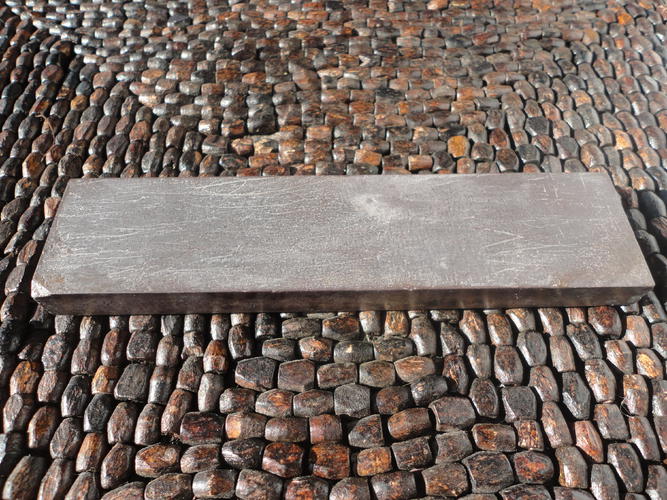
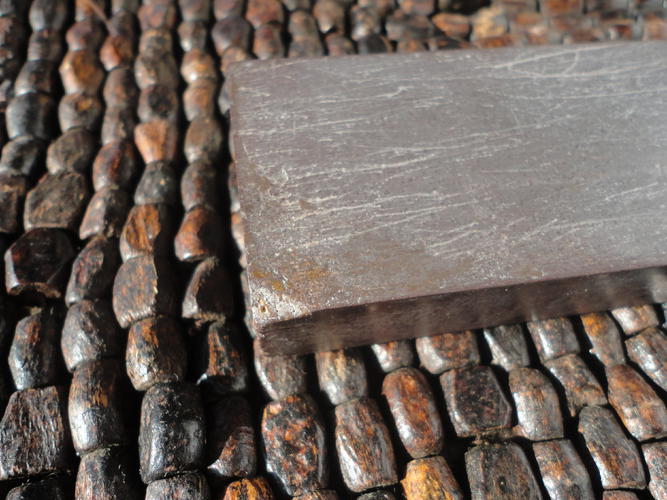
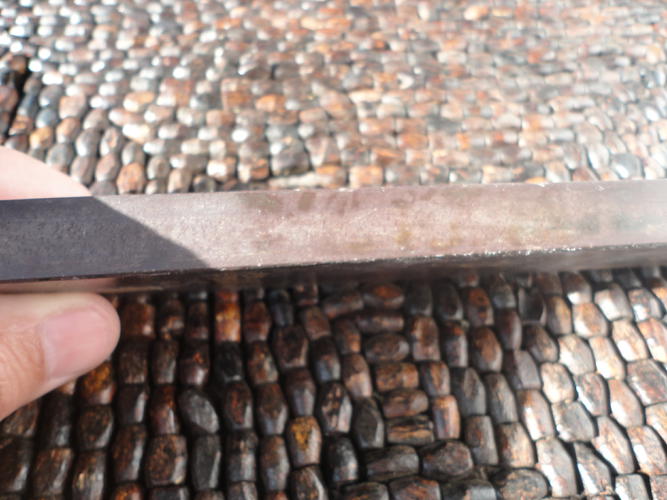
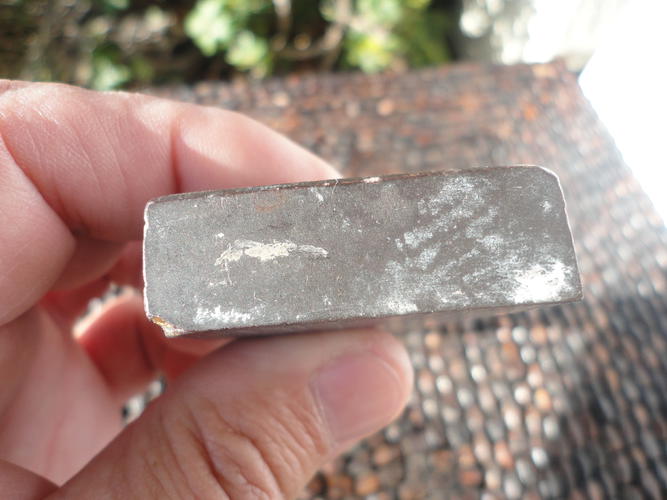
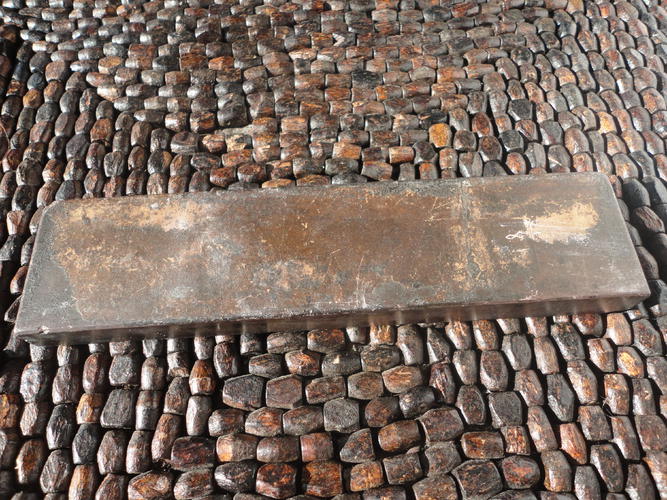
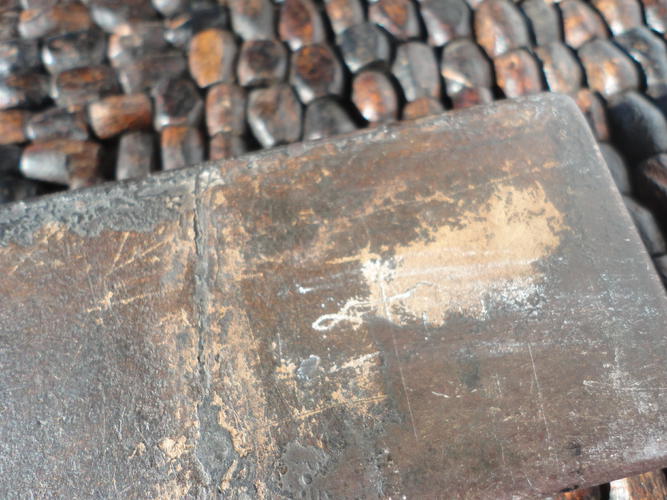
-
The Following User Says Thank You to Euclid440 For This Useful Post:
Carabnr (05-16-2016)
-
05-16-2016, 12:03 AM #10Junior Member

- Join Date
- May 2016
- Location
- NC
- Posts
- 14
Thanked: 0
Thanks again you guys,
I'm more confused than before about what it was that I found, but i guess it doesn't really matter what it is. I also just got some new Mora carving knives that are super sharp right off the shelf, but not sharp enough to whittle with, a burr... Should I consider using this stone after lapping it with a Naniwa 220? Should I use it first on older knives first to burnish it?
The hard black I have is a small multiform slip type for carving tools. I'm intimidated to use it on the carving knives, cause I have only partially lapped it and it's small 2X4 or so.
Euclid 440,
Thanks for the post. My stone is not labeled a Lorraine, I just figured it was by the flickr images and the research I did last night.
That looks like a really pretty stone, but looks like it'll need some work.


 17Likes
17Likes LinkBack URL
LinkBack URL About LinkBacks
About LinkBacks






 Reply With Quote
Reply With Quote

